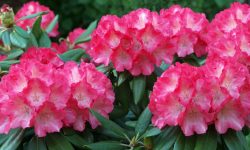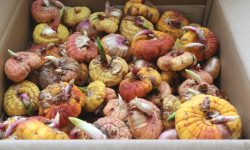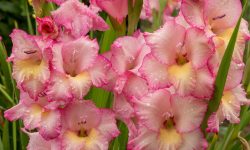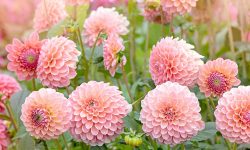Gardenias are celebrated for their stunning white blooms and captivating fragrance, making them a favorite in gardens and indoor spaces alike. Knowing when gardenias bloom is essential for maximizing their beauty and ensuring consistent flowering. Proper care, including sunlight, watering, and fertilization, directly influences the timing and abundance of blooms. By understanding their seasonal patterns, gardeners can plan maintenance and enjoy vibrant flowers throughout the year.
Blooming times vary depending on the gardenia variety, climate, and growing conditions. Observing these factors helps gardeners predict flowering and take proactive steps to enhance growth. With the right seasonal care, gardenias can produce lush, fragrant blooms that enrich any garden or home environment.
Understanding Gardenia Blooming Patterns
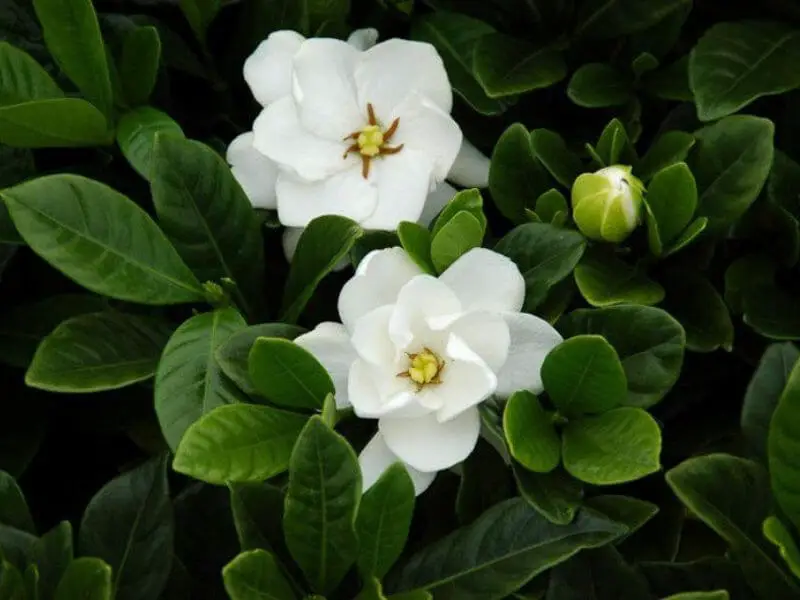
Gardenias are renowned for their fragrant, elegant flowers, but their blooming patterns can vary widely depending on variety and growing conditions. Most gardenias produce flowers on new growth, meaning that proper care and seasonal timing are crucial for encouraging consistent blooms. Some varieties, like Gardenia jasminoides, tend to bloom primarily in late spring and summer, while others may have extended flowering periods that continue into fall. Understanding these natural cycles allows gardeners to anticipate peak flowering and take necessary actions to promote healthy development and abundant blooms.
Blooming frequency and duration are influenced by several internal and external factors. The plant’s age, overall health, and environment all play a role. Younger gardenias may produce fewer flowers until they mature, whereas older, established plants can sustain longer and more prolific flowering periods. Additionally, environmental cues such as temperature fluctuations, daylight hours, and humidity levels affect bud formation and flower opening. By observing these patterns, gardeners can adjust care practices, such as watering and fertilization schedules, to align with the plant’s natural growth cycle and optimize flowering potential.
Recognizing the distinct blooming patterns of different gardenia varieties helps gardeners plan their seasonal maintenance more effectively. For instance, varieties that bloom in early spring may require specific pruning schedules to avoid removing potential buds, whereas summer bloomers benefit from post-flowering trimming to stimulate new growth. Additionally, providing ideal sunlight, soil, and moisture conditions throughout the year ensures that the plant remains vigorous and capable of producing multiple flushes of flowers. With careful observation and timing, gardeners can enjoy gardenias at their most vibrant and fragrant throughout the growing season.
Factors That Influence Gardenia Flowering
Temperature and Climate
Temperature plays a crucial role in gardenia flowering. These plants thrive in warm, humid climates, and consistent temperatures encourage healthy bud formation. Sudden temperature fluctuations can stress the plant, causing buds to drop before they open. Cold snaps in early spring or late frost in autumn can prevent flowering entirely or damage developing blooms. Gardenias in temperate regions often require protection during colder months, such as covering outdoor plants or moving container plants indoors.
Climate also affects flowering duration and intensity. In tropical and subtropical areas, gardenias may produce multiple flushes of flowers, while in cooler regions, the blooming period may be shorter. Maintaining a stable environment with minimal temperature extremes ensures buds mature properly and flowers open fully. Gardeners should monitor local climate patterns and adjust care routines accordingly. Using microclimates, such as sheltered garden corners or sun-facing patios, can help provide ideal temperature conditions. Understanding the interplay between temperature and climate allows gardeners to optimize flowering and enjoy abundant, fragrant blooms.
Sunlight Exposure
Sunlight is essential for gardenias to bloom successfully. These plants prefer bright, indirect sunlight or partial shade. Too much direct sun can scorch leaves, while insufficient light reduces flower production and weakens stems. Observing the plant’s response to sunlight helps determine the optimal exposure for maximum blooms. Providing morning sun with afternoon shade is often ideal, especially in warmer climates.
Proper sunlight exposure also influences the fragrance of gardenia flowers. Adequate light promotes healthy growth, strong stems, and vigorous flower development, enhancing both the visual appeal and aroma. Gardenias grown in shaded or low-light areas may produce fewer blooms and have weaker scent intensity. Adjusting the plant’s position or using reflective surfaces to increase light exposure can encourage flowering. Consistent sunlight management throughout the growing season ensures the plant remains healthy and produces lush, fragrant blooms.
Soil Conditions
Soil quality significantly affects gardenia flowering. These plants prefer well-draining, acidic soil with a pH between 5.0 and 6.5. Poor soil or heavy clay can retain excess water, leading to root rot and fewer blooms. Amending soil with organic matter like compost or peat moss improves drainage, aeration, and nutrient availability, creating ideal conditions for flower development.
Nutrient-rich soil also supports strong bud formation. Gardenias rely on adequate levels of nitrogen, phosphorus, and potassium for healthy foliage and flowers. A balanced soil environment encourages consistent blooming and enhances flower size and fragrance. Testing soil periodically ensures pH levels and nutrient content remain optimal. By preparing and maintaining suitable soil, gardeners can maximize the number and quality of gardenia flowers while promoting overall plant health.
Watering Practices
Consistent watering is vital for gardenia flowering. These plants need evenly moist soil but cannot tolerate waterlogged conditions. Overwatering can cause root rot, leaf yellowing, and bud drop, while underwatering stresses the plant and prevents flower formation. Monitoring soil moisture and adjusting irrigation frequency based on weather and seasonal changes ensures optimal growth.
Watering practices also affect flower quality and longevity. Deep, infrequent watering encourages strong root systems, supporting vigorous shoots and abundant blooms. Mulching around the base helps retain soil moisture, regulate temperature, and reduce stress during hot periods. Gardeners should avoid wetting leaves excessively, as this can increase the risk of fungal infections. Proper watering management ensures healthy foliage, robust flowering, and long-lasting, fragrant blooms throughout the season.
Fertilization
Fertilization directly influences gardenia flowering and overall health. Using a balanced, acidic fertilizer encourages strong growth, bud formation, and vibrant blooms. Gardenias require nutrients like nitrogen for leaves, phosphorus for flowers, and potassium for root and stem development. Applying fertilizer during active growth periods supports flowering and maintains plant vigor.
The timing and type of fertilizer are crucial. Slow-release fertilizers provide consistent nutrients over time, while liquid fertilizers can be used for quick nutrient boosts during the blooming season. Over-fertilization should be avoided, as excessive nitrogen can promote leafy growth at the expense of flowers. Regular feeding, combined with proper soil and watering management, ensures gardenias remain healthy and produce abundant, fragrant blooms year after year.
Seasonal Blooming Schedule
Spring Blooming
Spring represents the most vibrant flowering period for many gardenia varieties. As temperatures gradually rise and daylight increases, buds formed during late winter begin to swell and open. This season often produces the largest and most abundant blooms of the year. Gardeners can enhance flowering by ensuring proper watering and balanced fertilization during early spring. Regular observation of soil moisture and plant health helps prevent bud drop and promotes consistent flowering.
Pruning after the previous season’s blooms is also essential in spring. Removing dead or damaged stems allows the plant to focus energy on healthy growth and bud formation. Sunlight exposure should be monitored to avoid scorching new shoots while ensuring sufficient light for flower development. Soil enrichment with organic matter supports nutrient uptake, aiding in strong, fragrant blooms. Proper care during spring lays the foundation for a robust flowering cycle, ensuring that the gardenia reaches its peak potential and produces long-lasting, fragrant flowers throughout the season.
Summer Blooming
Summer blooming occurs as gardenias respond to long days and warmer temperatures. This season may produce a secondary flush of flowers, particularly for varieties suited to tropical and subtropical regions. Maintaining even soil moisture is critical to prevent bud drop caused by heat stress. Providing partial shade during the hottest part of the day protects foliage and flowers from scorching.
Fertilization during summer encourages flower retention and stimulates new bud formation. Light pruning after early blooms can remove spent flowers and promote fresh shoots. Gardeners should also monitor for common pests such as aphids, scale, and whiteflies, as infestations can reduce flowering. Adequate airflow around the plant minimizes disease risk. By providing consistent care, summer-blooming gardenias maintain healthy foliage, vigorous stems, and strong, fragrant flowers, ensuring a continuous display even during peak heat. Careful attention during summer is key to sustaining both bloom quantity and quality.
Fall Blooming
Some gardenia varieties continue to bloom into the fall, especially in regions with mild temperatures. Flowers during this season may be fewer in number, but they often exhibit a stronger fragrance due to cooler nights enhancing scent production. Maintaining consistent soil moisture and avoiding water stress is critical for sustaining blooms. Protecting the plant from sudden temperature drops helps prevent bud damage.
Fertilizing with bloom-boosting formulas supports flower development during autumn. Light pruning after summer blooms encourages new growth and prevents overcrowding. Gardeners should also maintain good sunlight exposure and remove fallen debris around the base to prevent disease. Proper mulching helps retain soil moisture and moderate temperature fluctuations. With attentive care, fall gardenia blooms can remain healthy and aromatic, extending the flowering season and providing a beautiful transition into cooler months. This ensures that the plant continues to perform beautifully before winter dormancy.
Winter Blooming
Winter-blooming gardenias are often grown in controlled climates or indoors, allowing flowers to open when outdoor conditions are unsuitable. These varieties produce blooms on older wood, with buds forming in late autumn and opening in winter. Maintaining stable indoor temperatures and humidity levels is crucial for proper flower development. Sudden temperature changes or low humidity can cause buds to drop or flowers to fade prematurely.
Watering and fertilization remain important during winter, though frequency may be reduced compared to the active growing season. Minimal pruning is recommended to avoid removing potential buds. Bright, indirect light supports bud maturation and helps flowers open fully. Winter-blooming gardenias provide color and fragrance indoors, brightening spaces during the colder months. Consistent care ensures that the plant remains healthy, retains energy for future growth, and produces strong, fragrant blooms that extend the enjoyment of gardenias even when outdoor conditions are dormant.
Gardenia Care Tips for Maximum Blooms
Pruning Techniques
Pruning is essential for encouraging abundant blooms in gardenias. Removing dead, damaged, or weak stems allows the plant to redirect energy into healthy growth and flower production. Light pruning can be done throughout the growing season to maintain shape and airflow, while more substantial trimming is best performed after flowering. Proper pruning also prevents overcrowding, reduces the risk of disease, and promotes strong stem development.
Gardeners should use clean, sharp tools to make precise cuts near the main stem, avoiding jagged edges that can harbor pests or disease. Understanding the plant’s growth cycle helps determine the best time for pruning, ensuring buds are not removed prematurely. Regular observation and careful trimming contribute to a visually appealing structure, stronger branches, and a higher number of fragrant blooms. Over time, consistent pruning establishes a robust, long-lasting gardenia plant capable of producing continuous seasonal flowers.
Pest and Disease Management
Managing pests and diseases is crucial for maintaining healthy, blooming gardenias. Common pests include aphids, scale insects, and whiteflies, which can weaken the plant, stunt growth, and reduce flower production. Regular inspection of leaves, stems, and buds helps detect infestations early, allowing prompt treatment before serious damage occurs.
Diseases such as root rot, leaf spot, and powdery mildew can also affect flowering. Maintaining proper soil drainage, avoiding overhead watering, and ensuring adequate airflow around the plant help prevent disease. Organic or chemical treatments may be necessary for severe infestations, but preventative measures are always the most effective. Healthy gardenias with minimal pest and disease pressure produce stronger growth, more flowers, and maintain their characteristic fragrance, making proactive management essential for maximum blooms.
Container vs Ground Planting
Whether grown in containers or directly in the ground, gardenias require tailored care to ensure optimal blooming. Container plants have restricted root space, making proper soil, watering, and fertilization even more important. Pots should be well-draining, and plants may need more frequent feeding than gardenias in the ground.
Ground-planted gardenias can develop larger root systems, supporting more abundant blooms, but they may be more susceptible to pests and environmental extremes. Choosing the right location with adequate sunlight, good drainage, and shelter from harsh conditions is key. Both container and ground plantings benefit from consistent monitoring, pruning, and pest management. Understanding the unique needs of each growing method ensures that gardenias remain healthy, vigorous, and capable of producing abundant, fragrant flowers season after season.
Enhancing Flowering and Fragrance
Light and Temperature Management
Proper light and temperature are critical for enhancing gardenia flowering and fragrance. Gardenias thrive in bright, indirect sunlight, which supports healthy growth and encourages buds to form. Too little light results in sparse blooms and weak stems, while excessive direct sunlight can scorch leaves and reduce flower quality. Morning sun with afternoon shade is ideal, especially in warmer climates, as it balances energy for photosynthesis without stressing the plant.
Temperature also plays a significant role in bloom development and scent production. Gardenias prefer consistent warmth with minimal fluctuations, ideally between 65°F and 75°F during the day and slightly cooler at night. Sudden cold snaps or heat waves can cause buds to drop prematurely. Indoor gardenias may require careful placement near bright windows and away from drafts or heating vents. By controlling light exposure and temperature, gardeners can optimize flower formation, resulting in stronger, more fragrant blooms that reach full potential throughout the season.
Soil and Fertilizer Optimization
Soil quality and proper fertilization are essential for boosting gardenia flowering and fragrance. Gardenias thrive in well-draining, acidic soil with a pH between 5.0 and 6.5. Poor or compacted soil can limit root growth, reduce nutrient uptake, and lead to fewer blooms. Amending soil with organic matter such as compost or peat moss improves texture, aeration, and nutrient availability.
Fertilization further enhances flowering. Using a balanced, acid-loving plant fertilizer encourages healthy leaf growth, bud formation, and strong stems. Slow-release fertilizers provide consistent nutrients over time, while liquid feeds can give an immediate boost during the blooming season. Over-fertilization should be avoided, as excessive nitrogen promotes leafy growth at the expense of flowers. Proper soil preparation and targeted fertilization ensure that gardenias produce abundant, fragrant blooms while maintaining overall plant health and vigor throughout the growing season.
Watering Strategies
Consistent and strategic watering is vital for promoting healthy gardenia blooms. Gardenias require evenly moist soil but cannot tolerate waterlogged conditions, which can lead to root rot and bud drop. Shallow or irregular watering stresses the plant, reducing flower production and affecting fragrance quality. Monitoring soil moisture and adjusting watering frequency according to weather and seasonal changes ensures optimal growth.
Deep, infrequent watering encourages strong root development, supporting vigorous stems and abundant blooms. Mulching around the base helps retain moisture, regulate soil temperature, and prevent rapid drying. Indoor gardenias benefit from maintaining humidity levels through misting or humidity trays, especially in dry environments. Proper watering practices support consistent flowering, enhance scent intensity, and ensure that gardenias remain healthy, resilient, and capable of producing long-lasting, fragrant blooms throughout their growing season.
Common Problems That Delay Blooming
Overwatering and Root Rot
Overwatering is a common issue that delays gardenia blooming. Gardenias require evenly moist soil, but excessive water can suffocate roots and lead to root rot. When roots cannot absorb nutrients effectively, bud formation slows, and existing flowers may drop prematurely. Symptoms of overwatering include yellowing leaves, wilting, and soft, brown roots upon inspection.
Preventing root rot involves proper soil selection and drainage. Well-draining, acidic soil prevents water from pooling around roots, reducing the risk of fungal infections. Watering should be deep but infrequent, allowing the soil to partially dry between sessions. For container gardenias, ensure pots have drainage holes and avoid letting plants sit in saucers of water. Addressing overwatering promptly restores root health, encourages flower development, and ensures that the plant produces strong, fragrant blooms consistently.
Nutrient Deficiency
Nutrient deficiency can significantly delay gardenia flowering. Lack of essential elements like nitrogen, phosphorus, and potassium affects growth, bud formation, and bloom quality. Nitrogen deficiency may result in pale leaves and weak stems, while insufficient phosphorus and potassium limit flower production. These imbalances reduce the plant’s ability to produce vibrant, fragrant blooms.
Fertilizing gardenias with acid-loving, balanced fertilizers helps correct deficiencies. Slow-release fertilizers provide consistent nutrients, while liquid fertilizers can deliver an immediate boost during the growing season. Supplementing with micronutrients such as iron or magnesium may also be necessary if deficiency symptoms persist. Monitoring soil pH is crucial because nutrient uptake is optimal in acidic conditions. Addressing nutrient deficiencies ensures healthier foliage, stronger stems, and abundant, long-lasting gardenia blooms throughout the season.
Insufficient Light
Insufficient light is a common reason gardenias fail to bloom. These plants require bright, indirect sunlight to initiate bud formation and maintain healthy growth. In low-light conditions, energy is diverted toward leaf development rather than flowering, resulting in sparse or no blooms. Indoor gardenias placed too far from windows or shaded outdoor plants often show slow growth and reduced flower production.
To correct light deficiency, reposition the plant in a brighter location or provide supplemental lighting for indoor varieties. Outdoor gardenias benefit from morning sun with afternoon shade to avoid scorching. Observing the plant’s response to light changes can help determine the optimal exposure. Adequate sunlight encourages robust bud formation, enhances fragrance, and ensures vibrant, abundant blooms, allowing gardeners to enjoy the full beauty and scent of gardenias throughout their growing season.
Gardenia in Different Climates
Tropical and Subtropical Regions
Gardenias thrive in tropical and subtropical regions due to the consistently warm temperatures and high humidity. These conditions support rapid growth, multiple flushes of blooms, and prolonged flowering periods. In these climates, gardenias often produce lush foliage and abundant flowers with strong fragrance. Proper sunlight, ideally morning sun with some afternoon shade, enhances bloom quality and prevents leaf scorch.
However, tropical environments can also present challenges. High humidity and frequent rainfall may increase the risk of fungal diseases such as powdery mildew or root rot. Gardeners must ensure proper drainage and monitor for pests like aphids and scale insects. Regular pruning encourages airflow and reduces disease pressure while promoting healthy new growth. By adapting care practices to the climate, gardeners can enjoy year-round vibrant, fragrant blooms, making tropical and subtropical regions ideal for maximizing the flowering potential of gardenias.
Temperate Regions
In temperate regions, gardenias face more variable temperatures and seasonal changes, which can impact flowering. Winter cold and early frosts may damage buds or reduce bloom production. Gardenias planted outdoors in these climates often require protection, such as covering during frost or planting near sheltered locations to reduce wind exposure. Choosing cold-tolerant varieties helps improve survival and flowering consistency.
Seasonal care is essential for maintaining blooms in temperate climates. Pruning after flowering stimulates new growth while reducing overcrowding. Mulching helps retain soil moisture and moderates temperature fluctuations. Adjusting fertilization and watering to match seasonal changes ensures optimal flower development. Despite the challenges, proper care enables gardenias in temperate regions to produce vibrant blooms during the warmer months while maintaining plant health through colder periods.
Indoor and Container Gardenias
Gardenias grown indoors or in containers require specialized care to bloom successfully. Limited root space and controlled environments mean that proper soil, watering, and fertilization are critical. Well-draining acidic soil ensures roots receive nutrients without waterlogging, while container placement near bright windows provides sufficient light for bud formation.
Indoor environments often have lower humidity, which can affect bloom development and flower quality. Using humidity trays, misting, or placing plants in naturally humid rooms helps mimic ideal outdoor conditions. Regular monitoring of temperature and avoiding drafts or heating vents prevent stress and bud drop. Pruning and pest management remain important for container gardenias. By tailoring care to the indoor environment, gardeners can achieve abundant, fragrant blooms, bringing the beauty and scent of gardenias inside, even in areas with harsh outdoor climates.
Companion Planting and Landscaping Ideas
Gardenias are versatile plants that enhance garden aesthetics with their fragrant white flowers and glossy green foliage. Selecting companion plants that thrive in similar acidic, well-draining soil conditions and partial to full sunlight can create a visually appealing and harmonious landscape. Plants such as azaleas, camellias, and ferns complement gardenias, offering contrasting textures and colors while maintaining compatible growing requirements. Thoughtful placement of companion plants can also improve airflow and reduce disease risk by minimizing overcrowding.
Incorporating gardenias into landscaping designs allows for multiple creative possibilities. They can be used as focal points in flower beds, borders along walkways, or accent plants near patios and entryways. Their natural height and shape make them suitable for hedges or privacy screens, while container planting adds flexibility for patios, balconies, and indoor spaces. Combining gardenias with low-growing ground covers enhances the layered effect of the landscape, providing depth and visual interest throughout the year.
Strategic garden planning can also maximize the bloom display and fragrance impact of gardenias. Grouping several gardenias together encourages a concentrated floral scent that enhances the sensory experience. Using pathways or seating areas near flowering gardenias allows people to enjoy their aroma more fully. Seasonal rotations of companion plants can maintain year-round visual interest, while maintaining proper care and soil conditions ensures the gardenias remain healthy and continue to produce lush, fragrant blooms. This thoughtful integration elevates both the beauty and functionality of the garden space.
FAQ About When Gardenia Bloom
What time of year do gardenias usually bloom?
Gardenias typically bloom from late spring through summer, though some varieties can continue into fall or winter. Bloom timing depends on the plant’s age, climate, and care. Providing consistent sunlight, proper watering, and fertilization encourages regular and abundant flowering throughout the growing season.
Why are my gardenia buds dropping before opening?
Bud drop is often caused by environmental stress, including sudden temperature changes, low humidity, overwatering, or insufficient light. Ensuring stable conditions, maintaining proper soil moisture, and placing plants in bright, indirect light can prevent premature bud drop and promote healthy, fragrant blooms.
How can I make gardenias bloom more abundantly?
To maximize flowering, provide bright, indirect sunlight, well-draining acidic soil, and consistent watering. Fertilize with an acid-loving plant fertilizer and prune after blooming to stimulate new growth. Regular pest and disease management also ensures energy is directed toward healthy flower production.
Can gardenias bloom indoors or in containers?
Yes, gardenias can bloom indoors or in containers if proper care is given. Adequate light, humidity, and well-draining acidic soil are essential. Indoor plants may require supplemental lighting or humidity trays to mimic outdoor conditions. Consistent care ensures successful flowering year-round.
What common problems prevent gardenias from flowering?
Common issues include overwatering leading to root rot, nutrient deficiencies, insufficient light, and pest infestations. Monitoring soil moisture, fertilizing appropriately, providing adequate sunlight, and controlling pests or disease ensures gardenias remain healthy and capable of producing abundant, fragrant blooms.


